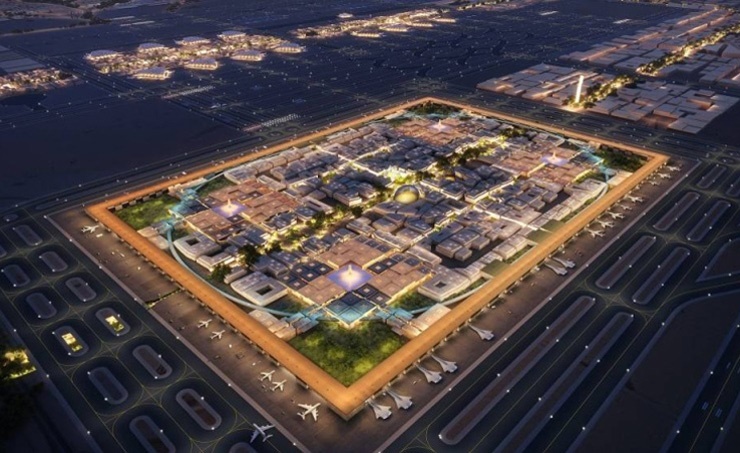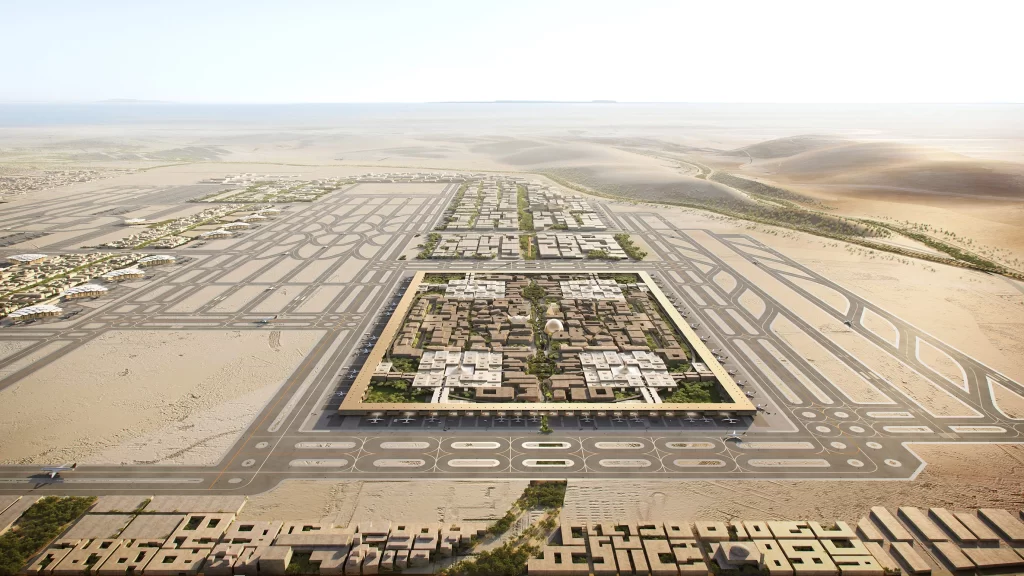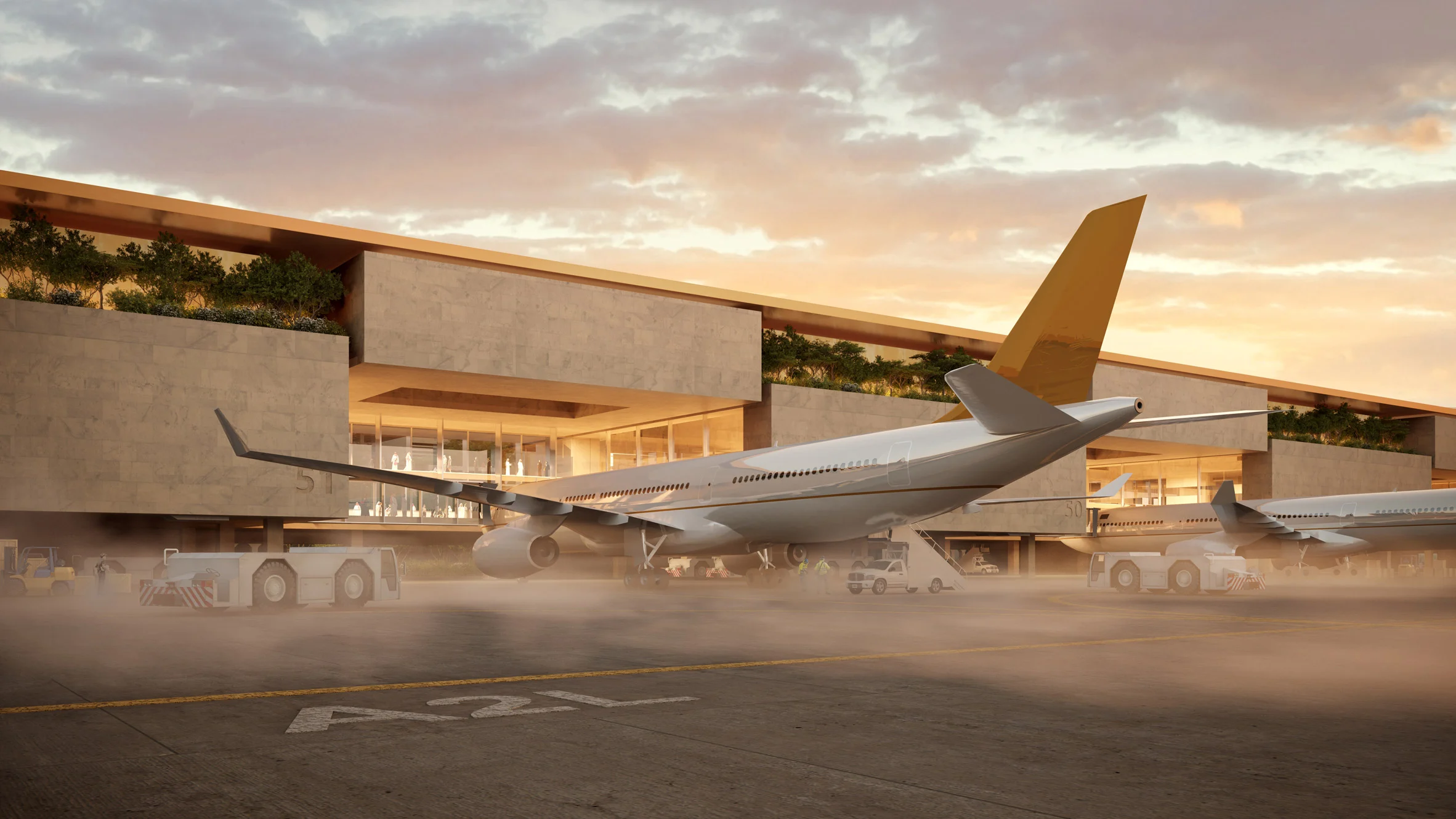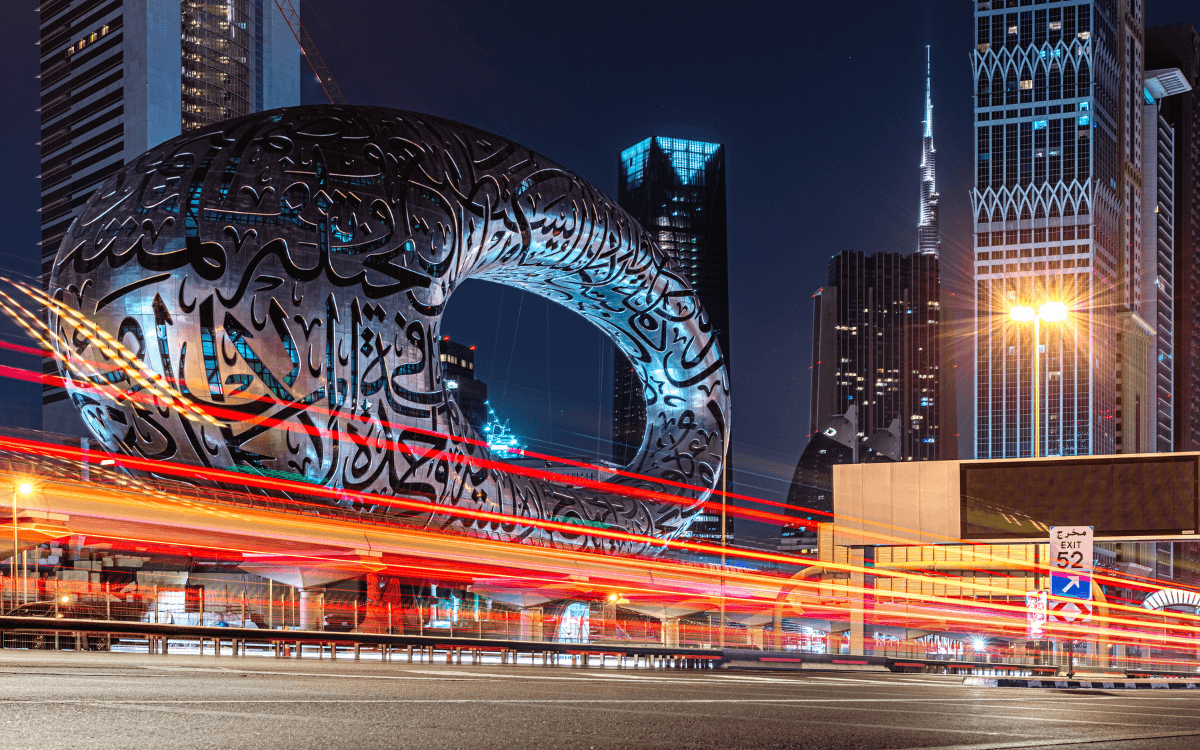Saudi Arabia is undertaking a massive project – building King Salman International Airport, slated to be the biggest airport on the planet when it opens its doors in 2030. This is very on-brand for this Middle Eastern country as this is not the biggest project Saudia Arabia is undertaking. That title goes to THE LINE.
British construction firm Mace secured the delivery partner role for the construction of the aiport. As a delivery partner, Mace will help the project owner oversee development. This includes managing costs, designing the project, and advising on procurement.
Mace brings a wealth of experience in airport projects, having worked on London’s Heathrow Airport for over three decades. Their recent appointment to manage three major infrastructure improvements at Heathrow further strengthens their qualifications.
A Gateway to a New Era

“King Salman International Airport will boost Riyadh’s position as a global logistics hub, stimulating transport, trade and tourism,” declared HRH Crown Prince Mohammed bin Salman bin Abdulaziz, highlighting the airport’s role as a catalyst for economic diversification. [Public Investment Fund Press Release, November 27, 2022]
Related: $408 Million Expansion of The Dubai Mall – What To Expect
The sheer scale of the project is mind-boggling. Spanning 57 square kilometers, the airport will boast six parallel runways, making it capable of handling a massive volume of air traffic. Passengers won’t just be whisked through; they’ll have the opportunity to indulge in some pre-flight retail therapy within a dedicated 12 square kilometer retail zone.
Sustainability Takes Off
King Salman International Airport isn’t just about size; it prioritizes sustainability as well. The design incorporates cutting-edge green initiatives and will be powered by renewable energy, aiming to achieve LEED Platinum certification – a globally recognized symbol of environmental responsibility in building design.
Jobs, Growth, and Transformation
The economic impact of this mega-project will be huge as well. The construction itself is expected to create 150,000 jobs, while upon completion, the airport is projected to contribute a significant 27 billion Saudi riyals annually to the non-oil GDP. This aligns perfectly with Saudi Arabia’s Vision 2030, a plan to diversify the economy and move away from a reliance on oil.
Tourism Takes Center Stage
Perhaps the biggest beneficiary of King Salman International Airport will be the tourism sector. The new airport is a cornerstone in a broader strategy to transform Riyadh, the Saudi capital, into a top-tier tourist destination. With the influx of travelers expected, the city is preparing a range of experiences, from historical treasures like the National Museum to futuristic marvels like the planned “neon line,” a groundbreaking linear city project.
The country is also planning to add its second flag courier, Riyadh Air, to complement the existing airline, Saudia.
Saudi Arabia is following the likes of U.A.E and Qatar in boasting tourism. The Arabian country is also scheduled to host the FIFA 2034 World Cup, an event that will not only bring millions of visitors to the country but also put Saudi Arabia on the map as a tourist destination.
After Qatar hosted the 2022 FIFA World Cup, an influx of tourists started streaming into the country. Hosting the football tournament was a way to show the world that Qatar is top tier tourist destination.
U.A.E and especially the Dubai Emirates has been doing this for a while. They embarked on a project to make Dubai the best tourist destination to reduce reliance on oil.
Dubai, at the moment is also embarking on a major project to move it’s operation from the DXB airport to Al Maktoum airport, a transition that will see the new airport more than double DXB’s current capacity.
As tourists, this is good for us. Why?
The competition among the gulf states means that us, consumers, will have an array of options and destinations to visit.
At the moment, Asia is my favourite go to travel destination. Let’s see if that will be cemented even more with this mega projects.
A Symbol of Ambition

The opening of King Salman International Airport in 2030 marks a significant shift. It shows Saudi Arabia’s ambition on the world stage and cements its effort to bolster tourism in the Gulf region.




